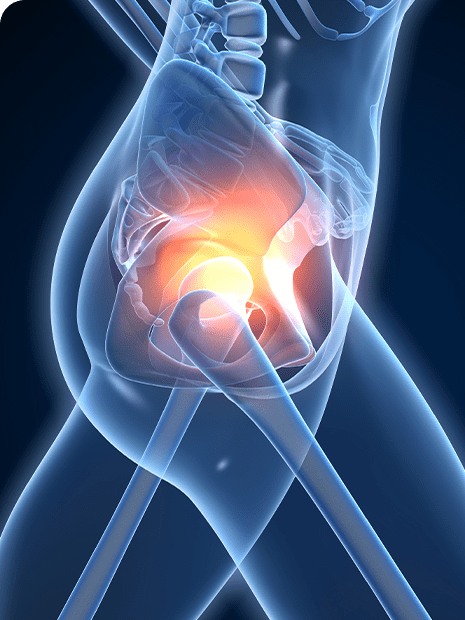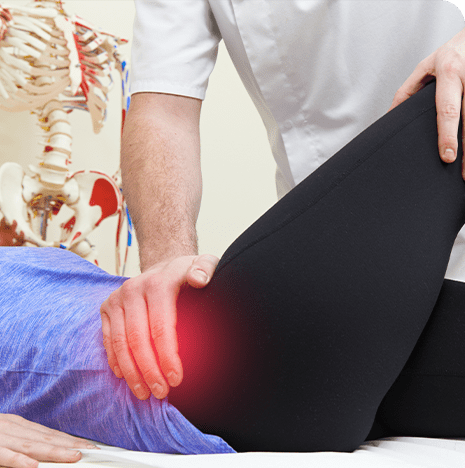Hip
At the Gastaldi Orquin Institute of Traumatology, our Hip and Pelvis Unit is dedicated to treating injuries and pathologies using the most advanced technology. We specialize in caring for the young adult hip, offering personalized and effective solutions.
Our team of specialists has extensive experience in the diagnosis and treatment of complex pathologies, with the goal of improving the quality of life of our patients. At the Hip and Pelvis Unit, we combine medical innovation and a comprehensive approach to achieve optimal recovery.
Hip osteoarthritis is a degenerative disease that affects the cartilage of the joint, causing pain, stiffness, and limited movement. It is common in older adults but can also occur due to factors such as being overweight, injuries, or genetic predisposition.
Treatments:
- Ultrasound-guided injections (precise and minimally invasive).
- Regenerative medicine (stimulates tissue repair).
- Surgery: Hip replacement (damaged joint replacement).


Avascular Necrosis
Avascular necrosis occurs when the blood flow to the hip bone is interrupted, causing bone tissue death. It can result from trauma, alcohol consumption, steroids, or other medical conditions.
Treatments:
- Regenerative medicine (promotes the regeneration of the affected tissue).
- Surgery: Hip replacement (in advanced cases).
- Guided ECO infiltrations
- Regenerative medicine
- Reconstructive surgery
Femoroacetabular Syndrome (FAS): It is an alteration of the hip where the femur and the acetabulum present an abnormal contact, causing pain and limitation of movement. There are three types: CAM (with deformity of the femoral head), PINCER (due to excess coverage of the acetabulum) and mixed (combination of both). It is usually caused by bone malformations during development or by repeated microtrauma in athletes. Symptoms include groin pain on hip movement, joint popping and progressive loss of mobility. If left untreated, it can lead to acetabular labral lesions and premature osteoarthritis. Diagnosis is made by physical examination and imaging tests such as X-rays or MRI. Treatments range from infiltrations and physiotherapy to arthroscopic surgery in advanced cases, with early diagnosis being key to avoid irreversible damage.
HIP TENDINOPATHY AND MUSCULOTENDINOUS TEARS
Includes various conditions such as gluteal tendonitis, psoas tendonitis, trochanteric pain syndrome, adductor or hamstring tendonitis, and tendon tears. These cause pain and functional limitations, especially in athletes or individuals with muscle overuse.
Treatments:
- Guided ECO infiltrations (to relieve pain and inflammation).
- Regenerative medicine (accelerates the recovery of tendons and muscles).
- Reconstruction surgery (in cases of severe tears).


Treatments
We address both traumatic injuries and degenerative pathologies, with special attention to the young adult hip. From conservative therapies to innovative surgical procedures, our goal is to ensure effective recovery and improve the quality of life of our patients.
- Personalized rehabilitation.
- Injections with hyaluronic acid or corticosteroids.
- Application of biological therapies such as platelet-rich plasma (PRP) and mesenchymal stem cells.
- Hip arthroscopy
- Corrective osteotomies
- Hip replacement

